How OpenAI Changing the World
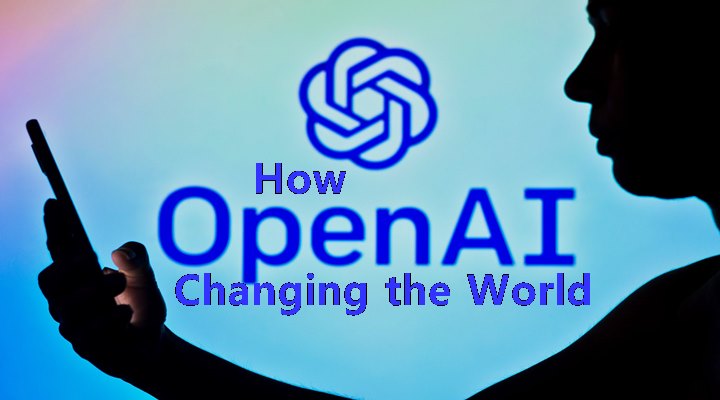
OpenAI is an artificial intelligence research organization that focuses on developing advanced AI technologies and promoting responsible AI development. It has gained prominence for its work in the field of natural language processing and machine learning.
Some of OpenAI’s notable achievements include the development of the GPT (Generative Pre-trained Transformer) series of language models, including GPT-3, which known for its ability to generate human-like text and perform various natural language understanding tasks. GPT-3 has been widely used in applications such as chatbots, content generation, language translation, and more.
OpenAI also promotes responsible AI development and ethics in AI research. They have published guidelines and principles for AI safety and ethics and have advocated for the responsible use of AI technology to avoid harmful consequences.
OpenAI has collaborated with various organizations and researchers to advance AI research and has contributed to the open-source community by releasing some of its AI models and tools to the public.
History and Founding:
OpenAI was founded in December 2015 by a group of prominent tech entrepreneurs and researchers, including Elon Musk, Sam Altman, Greg Brockman, Ilya Sutskever, John Schulman, and Wojciech Zaremba. The organization was initially established as a nonprofit, but it later transitioned to a for-profit model known as the “OpenAI LP” in order to secure funding for its ambitious research projects.
Mission and Guiding Principles:
OpenAI’s mission centered on ensuring that artificial general intelligence benefits all of humanity. To achieve this mission, OpenAI adheres to several guiding principles:
- Broadly Distributed Benefits: OpenAI commits to using any influence it obtains over AGI to ensure it benefits everyone. It pledges to avoid uses of AI or AGI that could harm humanity or unduly concentrate power.
- Long-Term Safety: OpenAI is dedicated to conducting research that makes AGI safe. The organization also actively promotes the widespread adoption of safety research across the AI community.
- Technical Leadership: OpenAI aims to be at the forefront of AI capabilities. By striving for technical leadership, it can effectively address AGI’s impact on society and provide valuable insights to shape AI development.
- Cooperative Orientation: OpenAI actively cooperates with other research and policy institutions. The goal is to create a global community that collaboratively addresses the challenges posed by AGI.
Key Achievements and Projects:
OpenAI has made significant contributions to the field of artificial intelligence through various research projects and innovative developments. Some of its key achievements and projects include:
- GPT Series: The Generative Pre-trained Transformer (GPT) series of language models, starting with GPT-1 and progressing to GPT-3, have revolutionized natural language understanding and generation. GPT-3, in particular, is renowned for its ability to generate human-like text and perform diverse language tasks.
- Dactyl and Robotic Manipulation: OpenAI’s Dactyl project demonstrated impressive robotic manipulation capabilities using a robotic hand. This project showcased advancements in reinforcement learning for robotics and has implications for real-world applications.
- OpenAI Gym: OpenAI released OpenAI Gym, an open-source platform for developing and comparing reinforcement learning algorithms. This platform has become a standard tool for researchers and developers working on reinforcement learning.
- CLIP: OpenAI’s CLIP model is designed for vision and language understanding. It can understand and generate text from images and vice versa, opening up possibilities for applications in image recognition, translation, and more.
- Codex: OpenAI’s Codex is a language model designed for code generation. It can generate code in various programming languages based on natural language descriptions, making it a valuable tool for developers and programmers.
- Mujoco: OpenAI contributed to the development of MuJoCo (Multi-Joint dynamics with Contact), a physics engine widely used in robotics and reinforcement learning research.
OpenAI LP Transition and Funding:
In 2019, OpenAI announced a significant structural change by transitioning from being a nonprofit organization to forming a for-profit subsidiary known as “OpenAI LP.” This transition was motivated by the need for substantial funding to support its ambitious research goals.
OpenAI LP maintains the same mission and principles as the nonprofit arm. By operating as a for-profit entity, it can secure investments and partnerships with various organizations, including tech companies and venture capital firms. This funding has provided OpenAI with the resources necessary to pursue its research agenda.
Ethical and Safety Concerns:
OpenAI is actively involved in addressing ethical and safety concerns related to AI and AGI. The organization is committed to conducting research that makes AGI safe and to ensuring the responsible development and deployment of AI technologies.
OpenAI acknowledges the potential risks associated with AGI, such as misuse or unintended consequences, and is dedicated to minimizing these risks through careful research and collaboration with the broader AI community.
Collaboration with Other Research Institutions:
OpenAI emphasizes collaboration with other research and policy institutions to create a global community that collectively addresses AGI’s challenges. OpenAI has worked with organizations like DeepMind, Google Brain, and academic institutions on various research projects.
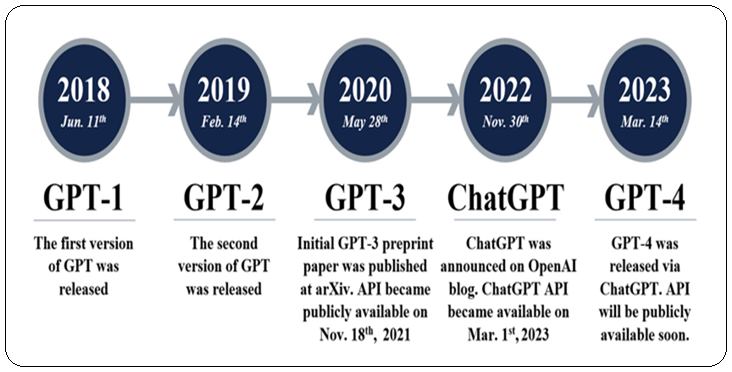
The GPT Series: Unlocking Language Understanding
One of the most significant contributions made by OpenAI is the development of the GPT (Generative Pre-trained Transformer) series of language models. These models have set new benchmarks in natural language understanding and generation. Let’s take a closer look at some key milestones in the GPT series:
- GPT-1: The Inaugural Model GPT-1, introduced in 2018, was the first iteration of the series. It demonstrated the potential of transformer-based architectures in language modeling. With 117 million parameters, GPT-1 was capable of generating coherent and contextually relevant text. It marked the beginning of OpenAI’s journey into creating increasingly powerful language models.
- GPT-2: Unleashing Controversy and Excellence In 2019, OpenAI unveiled GPT-2, a model with 1.5 billion parameters. What set GPT-2 apart was its ability to generate human-like text that was difficult to distinguish from content written by humans. OpenAI’s decision to withhold the full release of GPT-2 initially sparked controversy. Concerns were raised about the potential misuse of the technology for generating fake news, propaganda, and spam. However, after further evaluation, OpenAI released GPT-2 to the public, sparking innovation and research in the AI community.
- GPT-3: A Breakthrough in Language Modeling GPT-3, introduced in 2020, was a watershed moment in AI research. With a staggering 175 billion parameters, GPT-3 was the largest language model ever created. It showcased remarkable capabilities, such as generating coherent essays, answering questions, and translating languages, all with minimal human intervention. Developers and companies quickly began experimenting with GPT-3’s API, integrating it into various applications, from chatbots to content generation tools.
Impact on the AI Community:
OpenAI has had a profound impact on the AI research community in several ways:
- Advancements in Language Models: OpenAI’s GPT models have pushed the boundaries of natural language understanding and generation, leading to numerous applications in text generation, translation, chatbots, and more.
- Open-Source Contributions: OpenAI has released several of its AI models and tools to the open-source community, fostering collaboration and innovation in the field of AI.
- Benchmarking and Evaluation: OpenAI Gym has become a standard benchmark for reinforcement learning algorithms, enabling researchers to compare and evaluate their work effectively.
- Safety and Ethics Advocacy: OpenAI has been vocal about the importance of ethical AI development and safety research, influencing discussions and policies in the AI community.
- Technical Leadership: OpenAI’s pursuit of technical leadership has encouraged other organizations to stay competitive and push the boundaries of AI research.
Challenges and Future Directions:
OpenAI faces various challenges and uncertainties as it works towards its mission of ensuring AGI’s benefits for humanity. Some of these challenges include:
- Safety Research: Ensuring that AGI systems are safe and robust remains a significant challenge, as the development of highly autonomous systems comes with inherent risks.
- Ethical Considerations: Balancing the development of AGI with ethical principles and avoiding harmful uses of AI technology is an ongoing concern.
- Cooperation: Encouraging cooperation and collaboration across the AI research community, especially in the context of competitive pressures, is a complex task.
- Regulatory and Policy Frameworks: As AGI development progresses, there will be a need for robust regulatory and policy frameworks to ensure responsible use and accountability.
- Technological Progress: OpenAI must continue to make technological advancements to stay at the forefront of AI capabilities.
Ethical and Safety Concerns:
OpenAI places a strong emphasis on addressing ethical and safety concerns related to AI and AGI. The organization is committed to conducting research that makes AGI safe and ensuring the responsible development and deployment of AI technologies.
OpenAI acknowledges the potential risks associated with AGI, including misuse, bias, and unintended consequences. To mitigate these risks, OpenAI actively engages in research and collaborates with the broader AI community to establish best practices and safety standards.
Collaboration with Other Research Institutions:
OpenAI actively fosters collaboration with other research and policy institutions. This collaborative approach is crucial for creating a global community that can collectively tackle the challenges posed by AGI.
OpenAI has worked closely with organizations such as DeepMind, Google Brain, and various academic institutions on joint research projects. These partnerships facilitate the exchange of knowledge and expertise, driving innovation and responsible AI development.
Impact on the AI Community:
OpenAI’s contributions and initiatives have had a profound impact on the AI research community, influencing both research and practice. Here are some notable ways in which OpenAI has shaped the field:
- Advancements in Language Models: OpenAI’s GPT models have set new benchmarks for natural language understanding and generation. These models have found applications in text generation, translation, chatbots, and more.
- Open-Source Contributions: OpenAI has a history of releasing its AI models and tools to the open-source community. This open-access approach encourages collaboration and innovation within the AI research community.
- Benchmarking and Evaluation: OpenAI Gym has become a standard platform for benchmarking and evaluating reinforcement learning algorithms. It provides a common framework for researchers to test and compare their work.
- Safety and Ethics Advocacy: OpenAI has played a prominent role in advocating for ethical AI development and safety research. Its influence has contributed to discussions and policies surrounding responsible AI.
- Technical Leadership: OpenAI’s pursuit of technical leadership has spurred other organizations to remain competitive and continually push the boundaries of AI research.
Challenges and Future Directions:
OpenAI faces several challenges and uncertainties as it strives to fulfill its mission. These challenges include:
- Safety Research: Ensuring the safety and robustness of AGI systems is a paramount concern. Developing mechanisms to prevent harmful behavior and unintended consequences remains a significant challenge.
- Ethical Considerations: Balancing technological progress with ethical principles and avoiding the misuse of AI and AGI technologies is an ongoing challenge.
- Cooperation: Encouraging cooperation and collaboration among AI researchers, even in the face of competitive pressures, is crucial for addressing AGI’s global challenges effectively.
- Regulatory and Policy Frameworks: As AGI development progresses, there will be a need for robust regulatory and policy frameworks to govern its deployment and use.
- Technological Advancements: OpenAI must continue to make technological advancements to stay at the forefront of AI capabilities. Maintaining technical leadership is essential to shaping AGI’s positive impact on society.
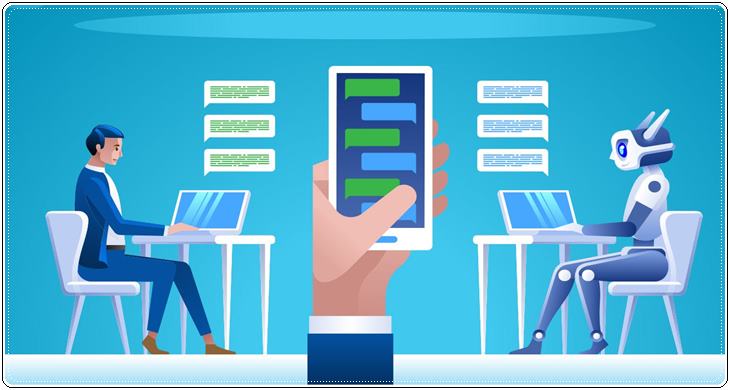
The Future of OpenAI
It holds several key developments and challenges as it continues to pursue its mission of ensuring that artificial general intelligence (AGI) benefits all of humanity. Here are some potential aspects of OpenAI’s future:
Advancements in AGI Research:
OpenAI will likely continue to be at the forefront of AGI research, pushing the boundaries of what AI systems can achieve. This includes further developments in language models, reinforcement learning, and robotics, among other areas. OpenAI’s technical leadership will be instrumental in shaping the trajectory of AGI development.
- Safety Research and Ethical Considerations:
OpenAI’s commitment to AGI safety will remain a central focus. Research into safety measures, robustness, and ethical considerations will be crucial as AI and AGI systems become increasingly integrated into society. OpenAI will work to establish best practices and safety standards that can be adopted across the AI community.
- Collaboration and Partnerships:
OpenAI will continue to collaborate with other research and policy institutions. These partnerships will help foster a global community of experts working together to address the challenges and risks associated with AGI. Collaborative efforts may lead to shared resources, frameworks, and guidelines for AGI development.
- Responsible Deployment:
As AGI systems advance, OpenAI will play a pivotal role in advocating for responsible deployment and use. Ensuring that AGI benefits all of humanity and avoids harmful consequences will require active engagement with policymakers, industry stakeholders, and the public.
- Regulatory Frameworks:
OpenAI may actively contribute to the development of regulatory frameworks for AGI. As AGI systems become more prevalent, governments and regulatory bodies will likely seek input and expertise from organizations like OpenAI to establish guidelines and policies for AGI development, safety, and deployment.
- Education and Outreach:
OpenAI may expand its efforts in education and outreach. Promoting AI literacy and providing resources to educate the public and policymakers about AGI’s potential and risks will be essential. OpenAI may develop educational materials, host conferences, and engage in public discourse on AI-related topics.
- Applications and Impact on Industries:
OpenAI’s research will continue to lead to practical applications across various industries. AGI technologies may significantly impact sectors such as healthcare, finance, manufacturing, and entertainment. OpenAI’s technologies could transform how businesses operate and create new opportunities for innovation.
- Global Collaboration:
OpenAI’s cooperative orientation will be crucial in fostering global collaboration. Collaborating with international partners, research institutions, and governments will help address global challenges and ensure that AGI development is a collective effort.
Technical Challenges of OpenAI
OpenAI will face ongoing technical challenges in AGI development. These challenges may include improving model efficiency, reducing environmental impact, addressing bias and fairness issues, and developing methods for understanding and controlling AGI systems.
Public Engagement:
OpenAI will likely continue engaging with the public to build trust and transparency. This may involve sharing research findings, providing insights into the development process, and seeking public input on important AI-related decisions.
- Evolving Business Models:
OpenAI’s transition to a for-profit model with OpenAI LP may evolve further. The organization may explore different revenue streams, partnerships, and funding mechanisms to sustain its research efforts and mission.
2. Impact on Society:
OpenAI’s work will have a profound impact on society. As AGI systems become more integrated into daily life, OpenAI’s mission to ensure the benefits of AGI are broadly distributed will become increasingly significant.
3. Unforeseen Developments:
The field of AI and AGI is dynamic and subject to rapid advancements and unexpected breakthroughs. OpenAI will need to adapt to unforeseen developments and challenges that may arise in the future.
How OpenAI interacts with and affects humans:
The relationship between OpenAI and humans is multifaceted, encompassing various aspects such as AI research, technology development, ethical considerations, and societal impact. Here’s a detailed exploration of how OpenAI interacts with and affects humans:
- AI Research and Development:
OpenAI is at the forefront of AI research and development. It employs researchers and engineers who work on cutting-edge AI technologies. This research has led to the creation of advanced AI models, including the GPT series and CLIP, which have significant implications for various industries and applications.
- Technical Advancements:
OpenAI’s technical advancements have the potential to transform how humans interact with technology. For example, GPT-based models have been used in chatbots, content generation, language translation, and more. These applications can enhance productivity and efficiency in various fields.
- AI Ethics and Safety:
OpenAI actively considers the ethical implications of AI and AGI. The organization is committed to ensuring that AGI benefits all of humanity and actively promotes research on AGI safety. This focus on safety aims to prevent unintended consequences and harmful uses of AI technology.
- Public Engagement:
OpenAI engages with the public to foster transparency and accountability. It has sought external input on AI-related topics, such as AI in education. Soliciting public input helps OpenAI make informed decisions that consider the broader societal impact of its work.
- Education and Awareness:
OpenAI plays a role in educating the public about AI and AGI. By sharing research findings, hosting conferences, and participating in public discourse, OpenAI contributes to AI literacy and raises awareness about the potential and risks of AGI.
- Collaboration:
OpenAI collaborates with other research institutions, companies, and organizations. This collaboration accelerates AI research and promotes the collective development of AGI technologies. OpenAI’s cooperative orientation ensures that advancements are made through a global, collaborative effort.
- AI in the Workforce:
OpenAI’s technologies, such as language models, can affect the workforce by automating certain tasks. While this can lead to increased efficiency, it may also raise concerns about job displacement. OpenAI’s work is intertwined with discussions on the future of work and the need for reskilling and upskilling.
- Economic Impact:
OpenAI’s innovations can have economic implications, as they can create new industries and disrupt existing ones. Governments and businesses need to adapt to the changing landscape brought about by AI and AGI to remain competitive.
- Policy and Regulation:
OpenAI’s work influences discussions around AI policy and regulation. Policymakers and regulators seek guidance from organizations like OpenAI to develop frameworks that ensure responsible AI development, address bias, protect privacy, and govern AI technologies.

OpenAI Impact on Work
AI and Healthcare:
OpenAI’s AI models have applications in healthcare, including medical image analysis, drug discovery, and patient care. These technologies have the potential to improve healthcare outcomes and reduce costs.
AI and Creativity:
OpenAI’s models, like GPT-3, are capable of generating creative content, such as art, poetry, and music. This raises questions about the intersection of AI and human creativity, as well as issues related to copyright and authorship.
AI Accessibility:
OpenAI’s work can impact the accessibility of AI technologies. Ensuring that AI systems are available to a broad range of users and that they are usable by individuals with disabilities is an important consideration.
Global Implications:
OpenAI’s mission extends beyond national borders. Its collaborative and cooperative approach encourages global participation in AGI development and governance, acknowledging that AGI will have global implications.
OpenAI’s impact on businesses is significant and continues to grow as the organization advances its artificial intelligence (AI) research and develops cutting-edge technologies. Here are several ways in which OpenAI intersects with and influences the business world:
AI-Powered Solutions:
OpenAI’s research and AI models, such as the GPT series, have been leveraged by businesses to develop AI-powered solutions. These models can be used in various applications, including chatbots, virtual assistants, content generation, and automated customer support. By incorporating OpenAI’s technologies, businesses can improve customer service, streamline operations, and enhance user experiences.
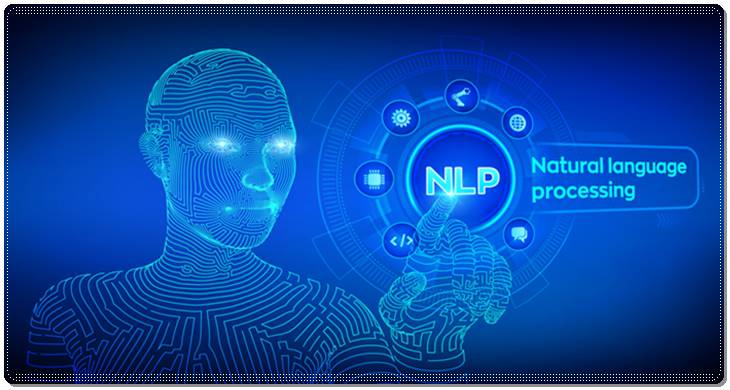
Natural Language Processing (NLP):
OpenAI’s language models have enabled businesses to harness the power of natural language processing. This technology is valuable for sentiment analysis, text summarization, language translation, and text generation. Companies can use NLP to gain insights from textual data, automate content creation, and improve communication with customers.
- Content Generation:
OpenAI’s language models, such as GPT-3, are capable of generating high-quality written content. This is particularly valuable for businesses that produce a large volume of content, such as marketing agencies, media companies, and e-commerce platforms. Content generation with AI can save time and resources while maintaining quality.
- Personalization and Recommendation Systems:
OpenAI’s AI models can enhance recommendation systems used by businesses in various industries, including e-commerce, streaming services, and online advertising. These models can analyze user behavior and preferences to provide personalized recommendations, increasing user engagement and sales.
- Data Analysis and Insights:
Businesses can use AI-powered tools based on OpenAI’s technology to analyze and gain insights from large datasets. This can inform decision-making, identify trends, and improve market research. OpenAI’s models can assist in data-driven strategies for businesses.
- Customer Support and Chatbots:
OpenAI’s language models can be integrated into chatbots and virtual assistants to provide more natural and effective customer support. Businesses can use AI chatbots to handle routine inquiries, offer 24/7 support, and improve customer satisfaction.
- Creative Content:
OpenAI’s models have the capability to generate creative content, including art, music, and storytelling. Creative businesses, such as advertising agencies and entertainment companies, can leverage AI-generated content to inspire creativity and explore new creative directions.
- AI in Healthcare:
OpenAI’s technology can be applied in the healthcare sector for tasks like medical image analysis, natural language understanding of medical records, and drug discovery. AI-driven solutions can enhance patient care, diagnostic accuracy, and research efforts.
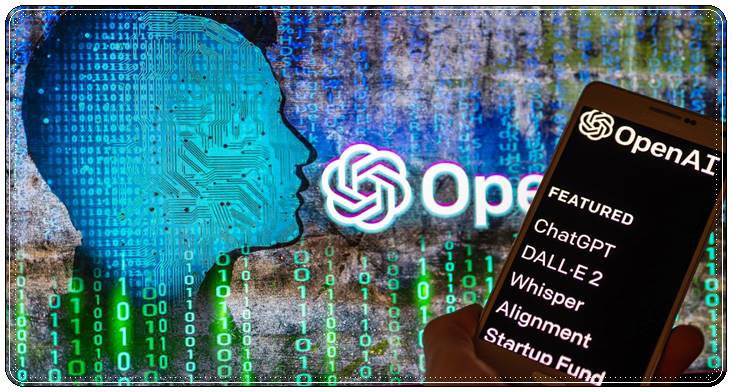
OpenAI on research and development:
Some businesses collaborate with OpenAI on AI research and development projects. OpenAI has partnerships and collaborations with various organizations, and businesses can benefit from the collective expertise and resources in advancing AI technologies.
- AI Training and Education:
OpenAI’s models can be used for training and education purposes. Businesses can develop AI-driven training modules, virtual trainers, or educational content that adapts to individual learners, providing more personalized and effective learning experiences.
2. AI Accessibility:
OpenAI’s commitment to broad benefits means that its technologies aim to be accessible to a wide range of users. Businesses can use these technologies to develop inclusive and accessible AI solutions, ensuring that their products and services are available to a diverse audience.
3. Competitive Advantage:
Businesses that incorporate OpenAI’s advanced AI capabilities into their operations can gain a competitive advantage. AI-driven innovations can lead to improved efficiency, cost savings, and the ability to offer unique and personalized services to customers.
4. AI Policy and Regulation:
OpenAI’s work and advocacy for ethical AI development influence the evolving landscape of AI policy and regulation. Businesses must stay informed about these developments to ensure compliance and responsible AI use.
Conclusion
In summary, OpenAI’s contributions to AI research and technology have far-reaching implications for businesses across industries. By harnessing OpenAI’s innovations, businesses can enhance their operations, deliver better customer experiences, drive innovation, and gain a competitive edge in an increasingly AI-driven world. OpenAI’s work continues to shape the business landscape as AI becomes integral to various aspects of industry and commerce.
OpenAI is a leading organization in the field of artificial intelligence, with a mission to develop AGI that benefits all of humanity. It has achieved significant milestones, including the development of GPT models, robotic manipulation, and contributions to open-source AI tools. OpenAI remains committed to ethical AI development, safety research, and collaboration with other institutions to address the challenges posed by AGI. As technology continues to advance, OpenAI’s work will play a crucial role in shaping the future of artificial intelligence and its impact on society.
In conclusion, OpenAI’s interactions with humans are wide-ranging and impactful. The organization’s research and development efforts shape the technological landscape, while its ethical considerations and commitment to safety seek to mitigate potential risks. OpenAI engages with the public, collaborates with others, and contributes to discussions on AI policy and regulation to ensure that AGI benefits all of humanity while considering its societal, economic, and ethical dimensions. The relationship between OpenAI and humans is central to the responsible and beneficial development of artificial general intelligence.
Writer: Tahsin Ahmed
